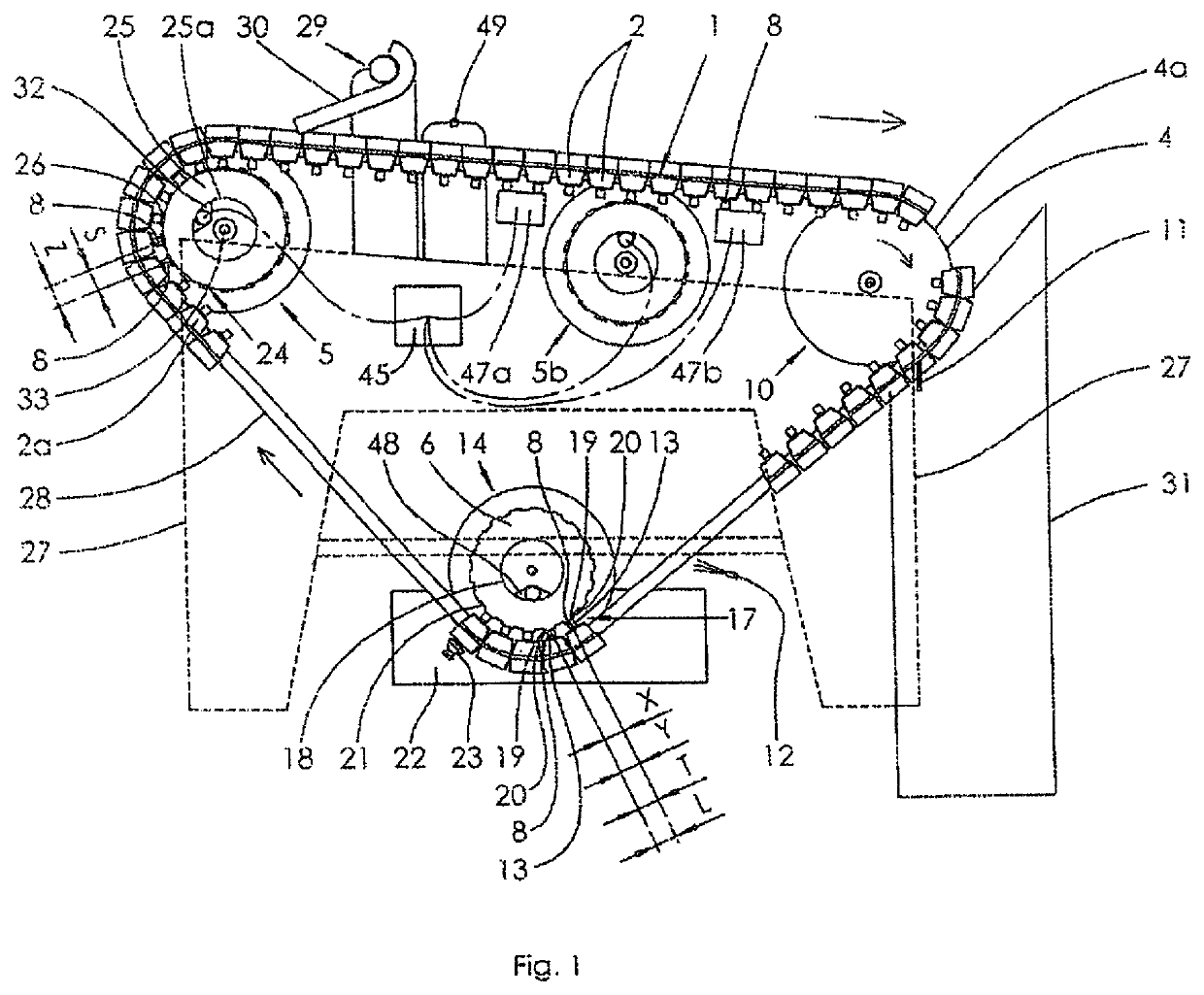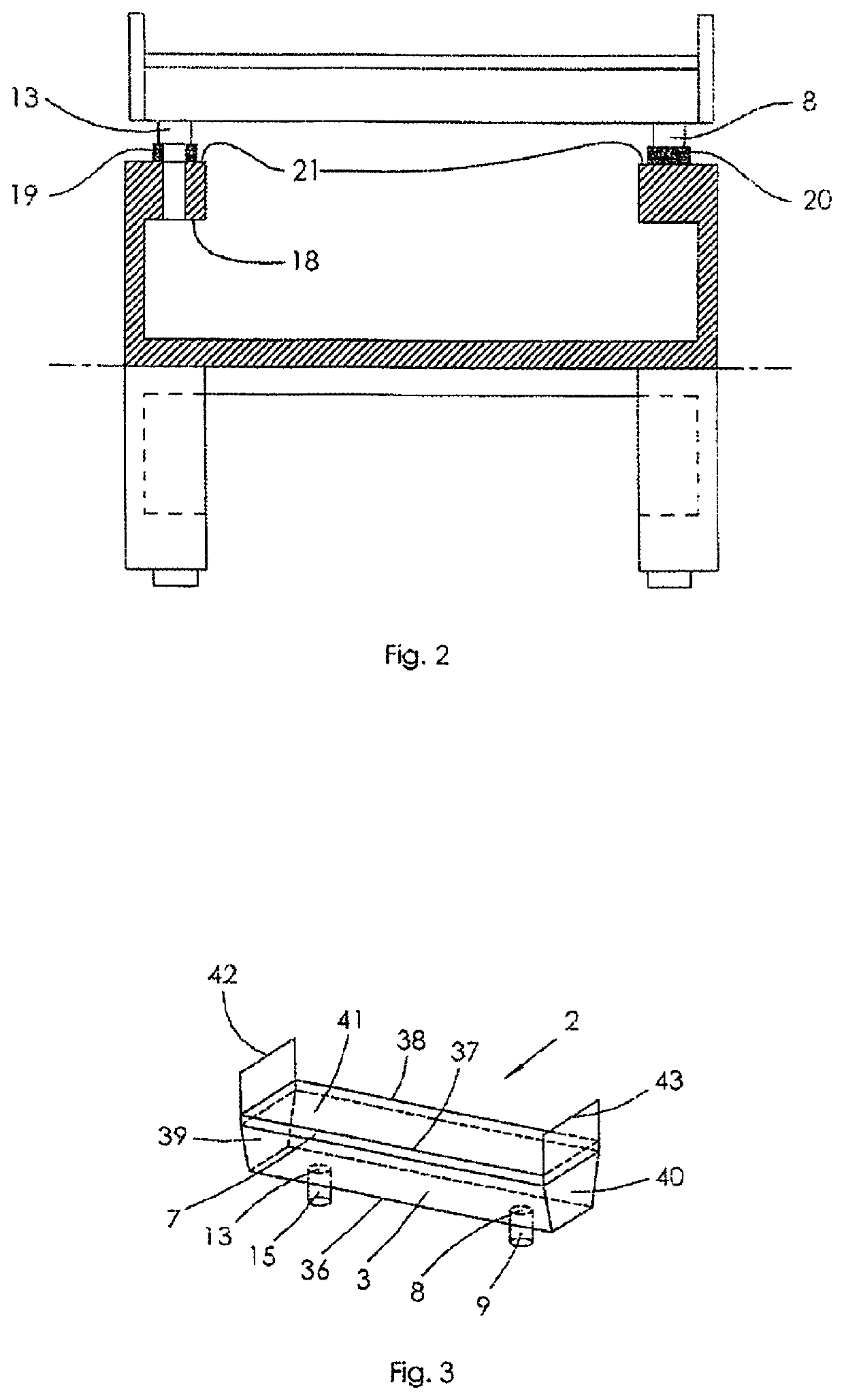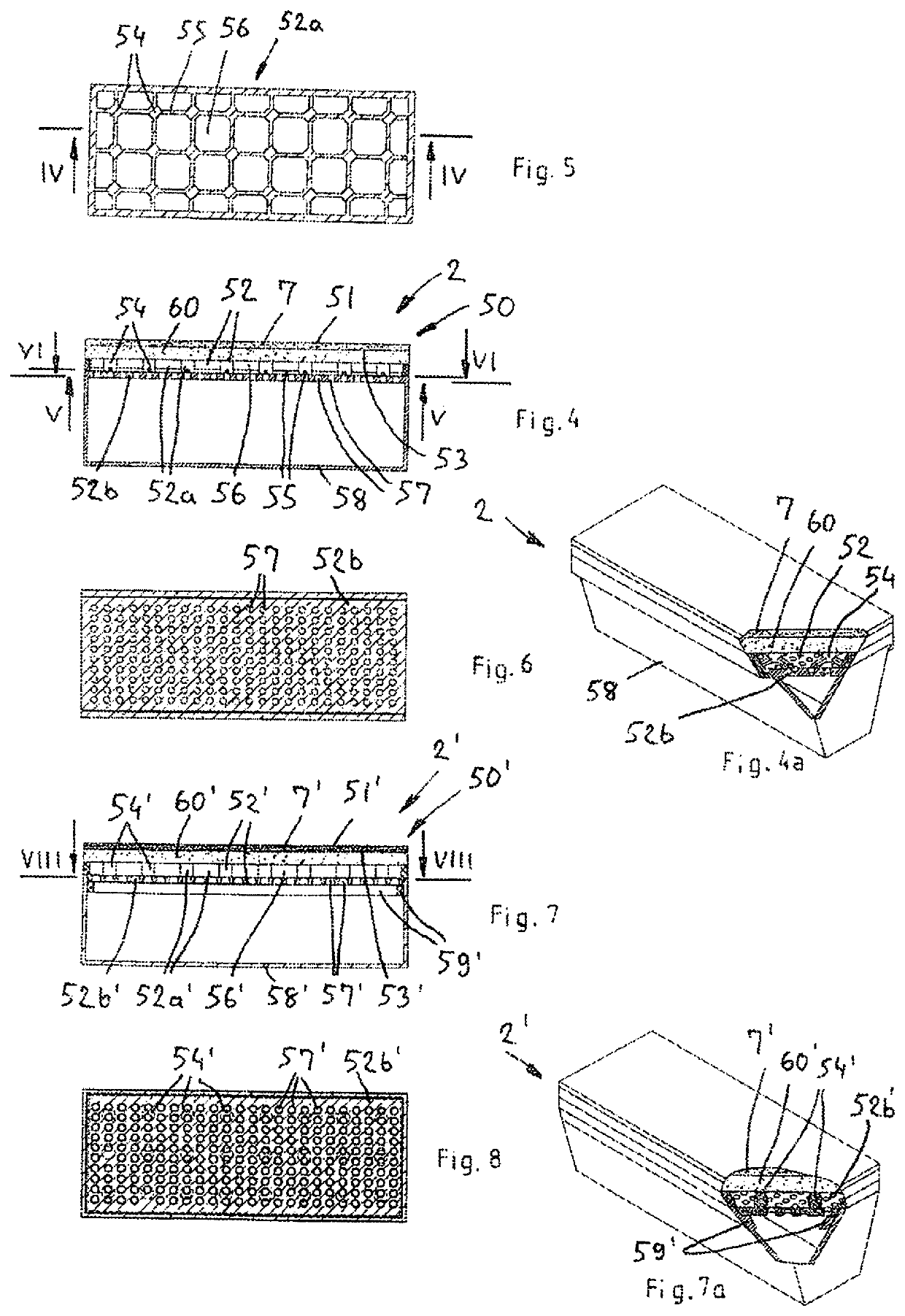Vacuum box, belt filter, methods for servicing a vacuum belt filter, method for liquid-solid separation of a slurry, and filter element
a vacuum box and filter element technology, applied in the direction of filtration separation, separation process, chemistry apparatus and processes, etc., can solve the problem of low energy consumption and achieve the effect of low energy cost, simple construction and convenient flow
- Summary
- Abstract
- Description
- Claims
- Application Information
AI Technical Summary
Benefits of technology
Problems solved by technology
Method used
Image
Examples
second embodiment
[0037]FIGS. 7a, 7 and 8 illustrate the filter element. In FIGS. 7a, 7 and 8 have been used similar reference numerals as in FIGS. 4 to 6 for corresponding components. The filter element 50′ of FIGS. 7a, 7 and 8 differs from the embodiment shown in FIG. 4a and FIGS. 4-6 in that the support element 52a′ is fastened not only to the intermediate layer 60, but also to the support element 52b′, which thus is part of the support structure 52′ and part of filter element 50′. Connectors, c.f. connectors 55 like those in FIG. 5, are not needed, because support element 52b′ connects the support parts 54′. Support element 52b′ is thus also a connecting means. The fastening of the support element 52a′ to the support element 52b′ can be carried out by various manners (permanently e.g. by gluing, or detachably e.g. by snap fasteners) as appreciated by a person skilled in the art. The support element 52b′ of FIG. 8 comprises a multitude of holes 57′, like support element 52b of FIG. 6. The support ...
third embodiment
[0038]FIGS. 9 and 10 show the filter element 50″. A corner area of the filter element 50″ is shown opened in the figures—only to illustrate the construction of the filter element. In the embodiment of FIGS. 9 and 10 the capillary filter 7″ is supported by a support structure 52″ in the form of a honeycomb structure. The honeycomb structure comprises a multitude of spaced holes 58″ defined by walls 61″. The honeycomb structure can preferably be made of plastic, preferably thermoplastic. If the honeycomb structure is made of plastic, there is preferably an intermediate ceramic layer 60″ between the filter 7″ and the honeycomb structure as shown in FIGS. 9 and 10. The intermediate ceramic layer 60″ has a grit number of 40 to 300, preferably 40 to 180, more preferably 60-120 which grid values form a rough joining interface for attaching of the honeycomb structure to the capillary filter 7″. However, the honeycomb structure can alternatively be made of e.g. ceramic material. If the suppo...
fourth embodiment
[0039]FIGS. 11 and 12 show the filter element. The filter element 50′″ of FIGS. 11 and 12 differs from the filter element 50′″ of FIGS. 9 and 10 essentially in that the support structure 52″ is a compact piece of porous material, i.e. it does not comprise (macroscopic) holes, c.f. holes 58″ in FIG. 10. A corner of the filter element 50′″ is shown opened to illustrate this. The pore size of the compact piece is bigger than the pore size of the ceramic filter 7′″. The piece is preferably a ceramic brick preferably made of a highly porous material. Alternatively, a compact piece of plastic or a piece of porous metal can be used. The capillary filter 7′″ has been formed onto the brick preferably by spraying. The manufacturing of the filter element 50′″ comprises preferably compressing a raw material to a brick, burning the brick in an oven, spraying the brick with a ceramic membrane layer, and finally burning the brick with the membrane layer in an oven. The brick has a grit number of 4...
PUM
| Property | Measurement | Unit |
|---|---|---|
| pore size | aaaaa | aaaaa |
| atmospheric pressure | aaaaa | aaaaa |
| area | aaaaa | aaaaa |
Abstract
Description
Claims
Application Information
 Login to View More
Login to View More - R&D
- Intellectual Property
- Life Sciences
- Materials
- Tech Scout
- Unparalleled Data Quality
- Higher Quality Content
- 60% Fewer Hallucinations
Browse by: Latest US Patents, China's latest patents, Technical Efficacy Thesaurus, Application Domain, Technology Topic, Popular Technical Reports.
© 2025 PatSnap. All rights reserved.Legal|Privacy policy|Modern Slavery Act Transparency Statement|Sitemap|About US| Contact US: help@patsnap.com



